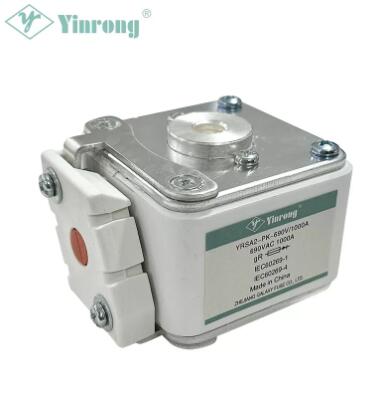Choosing the Right Materials for Square Body Ultra Fast gR Fuses: A Detailed Guide
2024-08-22
When designing or selecting Square Body Ultra Fast gR fuses for industrial or commercial applications, the choice of materials is critical to the performance and reliability of the fuse. These fuses must operate under extreme conditions, providing fast and effective protection for sensitive electronic components. In this blog, we’ll dive deeper into the considerations for selecting the materials used in Square Body Ultra Fast gR fuses and how these choices impact the fuse’s performance.
The Importance of Material Selection in Fuse Performance
Square Body Ultra Fast gR fuses are designed to interrupt overcurrent events rapidly, protecting components such as semiconductors from damage. The materials used in the construction of these fuses directly affect their speed of operation, thermal management, and durability. Key factors to consider when selecting materials include electrical conductivity, thermal stability, mechanical strength, and environmental resistance.
Key Materials and Their Selection Criteria
1. Fuse Element: Balancing Conductivity and Melting Point
- Silver: Silver is the preferred material for the fuse element due to its unparalleled electrical conductivity. This ensures minimal power loss under normal operating conditions. Silver also has a high melting point, which provides the necessary stability under normal operation, while still allowing the fuse to melt quickly in overcurrent situations.
- Copper: For cost-sensitive applications, copper can be used as an alternative. However, because copper’s melting point is lower than silver, the element is often silver-plated to enhance its performance. The choice between silver and copper often depends on the specific requirements for speed, reliability, and cost.
2. Body Material: Ensuring Structural Integrity
- Ceramic: The high thermal stability and excellent electrical insulation properties of ceramic make it the top choice for fuse bodies. Ceramic can endure the intense heat generated during the fuse’s operation without degrading, ensuring the structural integrity of the fuse even under fault conditions.
- Fiberglass: For applications where weight or cost is a concern, fiberglass-reinforced materials may be used. While not as robust as ceramic in extreme conditions, fiberglass provides a good balance between strength, thermal resistance, and cost.
3. End Caps: Optimizing Conductivity and Durability
- Copper with Silver Plating: The end caps must maintain strong electrical connections under varying conditions. Copper is used for its conductivity, while silver plating is applied to reduce oxidation, improve durability, and maintain low resistance over time. This combination ensures reliable performance and longevity.
- Brass: Brass end caps are chosen for their strength and resistance to corrosion. While slightly less conductive than copper, brass is more durable, making it suitable for environments where mechanical stresses are a concern.
4. Arc Quenching Medium: Controlling Fault Conditions
- Silica Sand: The arc quenching medium is crucial for preventing the arc generated during a fault condition from causing further damage. Silica sand is used for its ability to absorb and dissipate the energy of the arc quickly. This material helps to cool the arc, extinguish it, and protect the fuse and surrounding components from excessive heat and damage.
5. External Coating: Protecting Against Environmental Factors
- Epoxy Coating: In environments where moisture, chemicals, or physical damage could compromise the fuse, epoxy coatings are applied to the exterior. These coatings enhance the fuse’s resistance to environmental factors, providing an additional layer of protection.
- Glass Powder Coating: For applications requiring high thermal stability, glass powder coatings offer superior heat resistance and insulation. This is particularly important in high-temperature environments where standard coatings might fail.
Selecting the Right Combination of Materials
When selecting Square Body Ultra Fast gR fuses, it’s important to consider the specific requirements of the application:
- High-Speed Operation: For applications requiring the fastest possible response time, silver fuse elements with ceramic bodies and silica sand arc quenching are ideal.
- Cost-Effectiveness: Where budget constraints are a factor, copper fuse elements with fiberglass bodies and brass end caps may offer a suitable compromise.
- Harsh Environments: In environments exposed to moisture, chemicals, or extreme temperatures, fuses with silver-plated copper end caps, ceramic bodies, and glass powder coatings provide the best protection.
Conclusion
The materials used in Square Body Ultra Fast gR fuses are carefully selected to meet the demands of various industrial and commercial applications. By understanding the properties and benefits of each material, engineers and designers can make informed decisions that ensure optimal performance, reliability, and safety. Whether prioritizing speed, cost, or environmental resistance, choosing the right materials is key to the successful operation of these critical protective devices.



